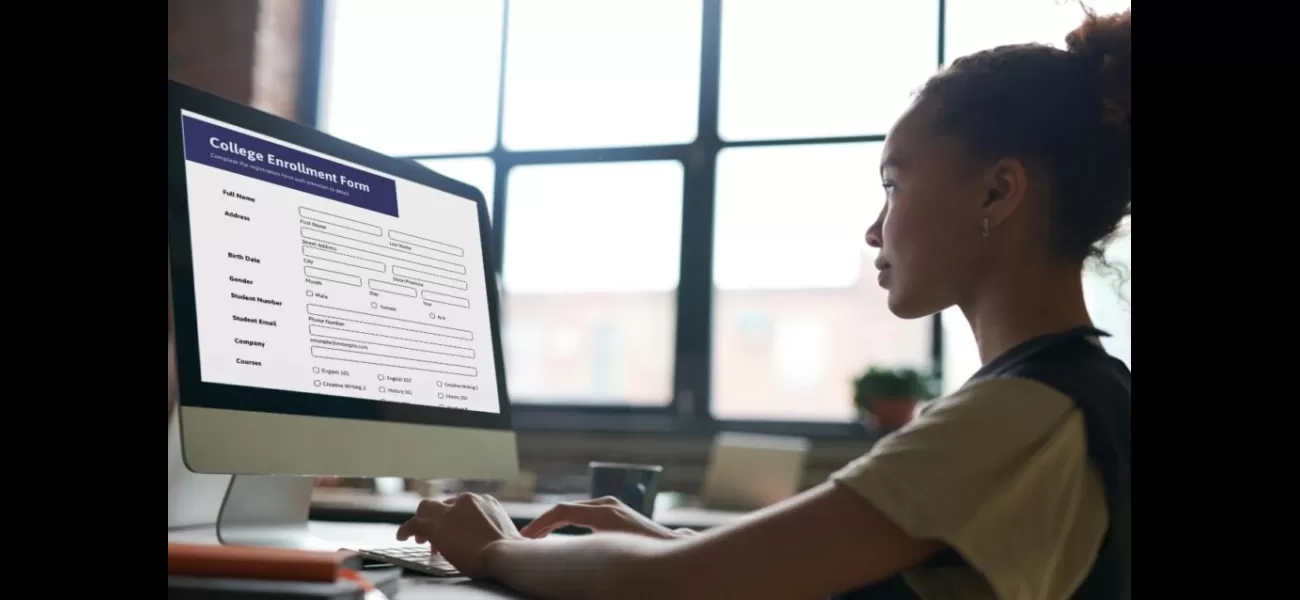6% more students have applied for college admissions in Fall 2024 compared to previous years.
The Common Application saw a 6% rise in applicants for fall 2024 admissions compared to last year.
April 1st 2024.

In recent news, it has been reported by Forbes that there has been a significant increase in college applications for the fall 2024 admissions cycle. This is a positive trend, especially during these challenging times in the admissions landscape. Despite the ongoing obstacles, it seems that there is still a strong desire for higher education among students. The data from the Common Application shows that there has been a 6% rise in applicants compared to the previous year.
What's particularly interesting about this surge in applications are the demographic trends among the applicants. This is especially noteworthy following the U.S. Supreme Court's decision to ban race-conscious admissions. There has been a notable increase of 10% in underrepresented minority applicants, such as Black, Latinx, and Indigenous students. In fact, this growth rate is five times higher than that of non-URM applicants.
Another significant finding is that applicants from families residing in below-median-income ZIP codes have also seen a 10% increase in applications, compared to their counterparts from above-median-income areas. This suggests that there is a widening access to higher education among economically disadvantaged communities.
As of March 1, 2024, a total of 1,313,763 first-year applicants have submitted their applications to 834 institutions through the Common App. This is a considerable rise from the previous year, indicating a growing trend in college applications. The total number of applications has now reached 7,541,148, which is a 7% increase from the previous admissions cycle.
It's worth noting that international applicants have also played a significant role in this overall increase, with a 13% surge compared to domestic applicants. This was especially evident among students from Ghana, Afghanistan, Mongolia, and Uzbekistan.
For students interested in applying to Historically Black Colleges and Universities (HBCUs), the Common Black College App (CBCA) is now available. To complete the application, students must first create a student account and provide relevant information, including demographic and academic details. They can then select their top four choices among the 24 participating institutions.
For these 24 institutions, the CBCA allows for the upload of official transcripts and test scores, while others require direct submission. It's important to note that essays and recommendation letters must be sent directly to the member institutions, not through the CBCA.
After completing the application, students will receive a confirmation letter stating that their application has been shared with all 52 member institutions. They are advised to contact the admissions offices of their top choices to check their application status and provide any additional information if needed.
While the increase in college applications is a positive sign for the higher education sector, there are still challenges to be addressed, such as the revamped FAFSA rollout and community college enrollment losses during the pandemic. These factors may still impact admissions outcomes. However, the rise in applicants shows a continued interest in pursuing higher education opportunities, despite the evolving admissions landscape and uncertainties.
What's particularly interesting about this surge in applications are the demographic trends among the applicants. This is especially noteworthy following the U.S. Supreme Court's decision to ban race-conscious admissions. There has been a notable increase of 10% in underrepresented minority applicants, such as Black, Latinx, and Indigenous students. In fact, this growth rate is five times higher than that of non-URM applicants.
Another significant finding is that applicants from families residing in below-median-income ZIP codes have also seen a 10% increase in applications, compared to their counterparts from above-median-income areas. This suggests that there is a widening access to higher education among economically disadvantaged communities.
As of March 1, 2024, a total of 1,313,763 first-year applicants have submitted their applications to 834 institutions through the Common App. This is a considerable rise from the previous year, indicating a growing trend in college applications. The total number of applications has now reached 7,541,148, which is a 7% increase from the previous admissions cycle.
It's worth noting that international applicants have also played a significant role in this overall increase, with a 13% surge compared to domestic applicants. This was especially evident among students from Ghana, Afghanistan, Mongolia, and Uzbekistan.
For students interested in applying to Historically Black Colleges and Universities (HBCUs), the Common Black College App (CBCA) is now available. To complete the application, students must first create a student account and provide relevant information, including demographic and academic details. They can then select their top four choices among the 24 participating institutions.
For these 24 institutions, the CBCA allows for the upload of official transcripts and test scores, while others require direct submission. It's important to note that essays and recommendation letters must be sent directly to the member institutions, not through the CBCA.
After completing the application, students will receive a confirmation letter stating that their application has been shared with all 52 member institutions. They are advised to contact the admissions offices of their top choices to check their application status and provide any additional information if needed.
While the increase in college applications is a positive sign for the higher education sector, there are still challenges to be addressed, such as the revamped FAFSA rollout and community college enrollment losses during the pandemic. These factors may still impact admissions outcomes. However, the rise in applicants shows a continued interest in pursuing higher education opportunities, despite the evolving admissions landscape and uncertainties.
[This article has been trending online recently and has been generated with AI. Your feed is customized.]
[Generative AI is experimental.]
0
0
Submit Comment





